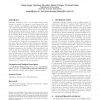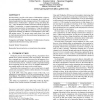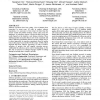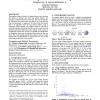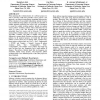MSR
2006
ACM
14 years 5 months ago
2006
ACM
Similarity analysis of source code is helpful during development to provide, for instance, better support for code reuse. Consider a development environment that analyzes code whi...
MSR
2006
ACM
14 years 5 months ago
2006
ACM
The development of libre (free/open source) software is usually performed by geographically distributed teams. Participation in most cases is voluntary, sometimes sporadic, and of...
MSR
2006
ACM
14 years 5 months ago
2006
ACM
Revision history provides a rich source of information to improve the understanding of changes made to programs, but it yields only limited insight into how these changes occurred...
MSR
2006
ACM
14 years 5 months ago
2006
ACM
With the success of libre (free, open source) software, a new type of software compilation has become increasingly common. Such compilations, often referred to as ‘distributions...
MSR
2006
ACM
14 years 5 months ago
2006
ACM
With the advent of open source software repositories the data available for defect prediction in source files increased tremendously. Although traditional statistics turned out t...
MSR
2006
ACM
14 years 5 months ago
2006
ACM
Software repositories have been getting a lot of attention from researchers in recent years. In order to analyze software repositories, it is necessary to first extract raw data f...
MSR
2006
ACM
14 years 5 months ago
2006
ACM
The number of bugs (or fixes) is a common factor used to measure the quality of software and assist bug related analysis. For example, if software files have many bugs, they may b...
MSR
2006
ACM
14 years 5 months ago
2006
ACM
When analyzing the evolution history of a software project, we wish to develop results that generalize across projects. One approach is to analyze design patterns, permitting char...
MSR
2006
ACM
14 years 5 months ago
2006
ACM
Software birthmarks are unique and native characteristics of every software component. Two components having similar birthmarks indicate that they are similar in functionality, st...
MSR
2006
ACM
14 years 5 months ago
2006
ACM
Modern source-control systems, such as Subversion, preserve change-sets of files as atomic commits. However, the specific ordering information in which files were changed is typic...
